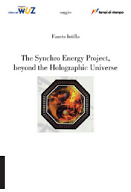 SOURCE
SOURCEMagnetically encoded information is at the core of much modern technology, and researchers are always looking for better ways to manipulate it. In the 8 May Physical Review Letters, a German team shows that a surprisingly feeble light beam can flip zeros to ones and vice versa, in a special magnetic layer. Although currently limited to very low temperatures, the apparently new effect might one day be extended to improve data storage.
Most familiar magnets are metals. They contain atoms that host tiny magnetic bar magnets, or moments, that can point up or down, and the atoms are surrounded by a sea of electrons. But researchers have long been interested in a different type of magnet, one consisting of widely separated magnetic ions embedded in a semiconductor. Unlike a metal, the number of free electrons in a semiconductor changes when it's exposed to electric current or light, so these materials should provide new ways to influence the magnetic properties, via the electrons. Light can flip the magnetization--the total magnetic moment of atoms in a region--from up to down, for example. But until now, experimenters needed very bright light to weaken the magnetization enough to reorient it.
In the new research, a team led by Laurens Molenkamp of the University of Würzburg in Germany grew a thin, crystalline layer of the common semiconductor gallium arsenide but replaced about one percent of the gallium atoms with the magnetic atom manganese. At temperatures below about 25 Kelvin, this layer acts as a ferromagnet: the magnetic moments on different manganese atoms point in the same direction, either up from the surface or down into it. The magnetization direction persists even when the researchers apply an opposing magnetic field, as long as the field does not exceed a threshold called the coercive field.
But when the team focused the light from a standard red laser on the film, the magnetization in the illuminated spot changed direction to match the magnetic field-- opposite to the rest of the film. The light didn’t change the strength of the magnetization, the team found, but instead reduced the field strength needed to flip it.
A mundane explanation would be that the light simply heats the film, which decreases the coercive field. To check this possibility, the team monitored the size of the magnetically flipped spot over many seconds of illumination. "It grows rather slowly," notes Würzburg team member Georgy Astakhov. "Heat diffusion occurs much, much faster." Instead, the team proposes that electrons liberated by the light (and the "holes" they leave behind) affect the magnetization directly. These charge carriers, they suggest, are quickly trapped in regions with high or low manganese concentration. These trapped charges effectively grease the motion of the "domain wall" that separates regions of opposite magnetization, by smoothing out local variations that would otherwise impede its motion. When the domain wall can move smoothly, a region with magnetization pointing up can more easily spread at the expense of a neighboring region having oppositely-directed magnetization.
Theo Rasing, of Radboud University in Nijmegen, Netherlands, says that more work is needed to confirm this non-thermal explanation, including extending the experiment to more than one sample. He also notes that because the dim light is on for a long time, the energy needed to flip the magnetization is not so different from other experiments that use very bright but short light pulses. Nonetheless, Rasing says that seeing a non-thermal change in magnetism with such a dim beam expands such "opto-magnetic" effects to new materials and mechanisms and should inspire further experiments by others.--Don Monroe Don Monroe is a freelance science writer in Murray Hill, New Jersey.
Related Information:
Physics Viewpoint essay by Molenkamp: Convincing a Magnetic Semiconductor to Work at Room Temperature (December, 2008)
Focus story on another optical magnetization flipping technique: Flipping Atoms Fast (1999)
Nonthermal Photocoercivity Effect in a Low-Doped (Ga,Mn)As Ferromagnetic Semiconductor G. V. Astakhov, H. Hoffmann, V. L. Korenev, T. Kiessling, J. Schwittek, G. M. Schott, C. Gould, W. Ossau, K. Brunne, and L. W. Molenkamp Phys. Rev. Lett. 102, 187401 (issue of 8 May 2009)















Nessun commento:
Posta un commento